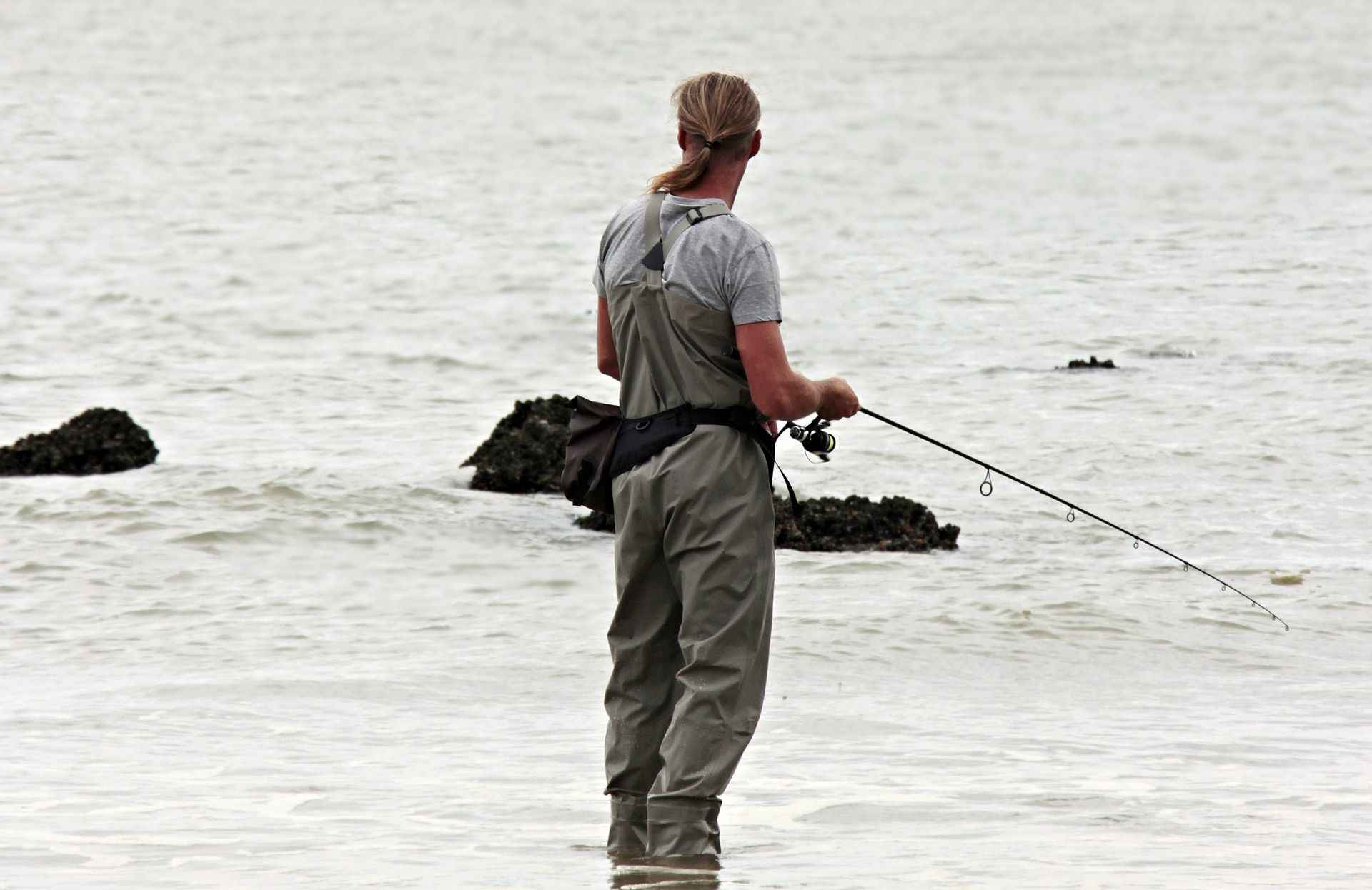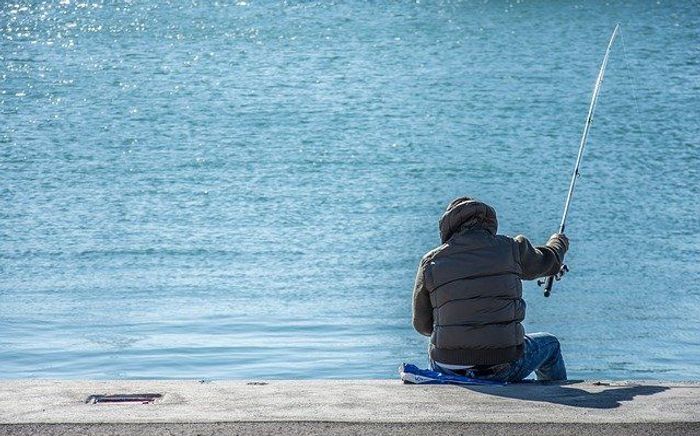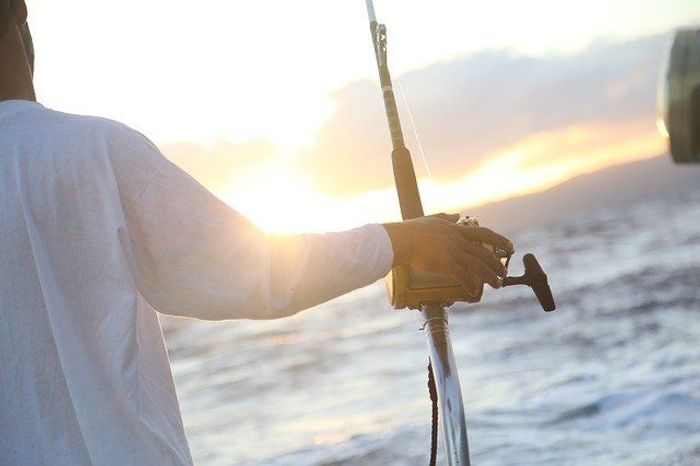What Fishing Gear Do I Need?
Want to start fishing but not sure what to bring? Here's a list of things you can bring for the kind of fishing you want to try out!

Ever wondered how many or what kinds of gear you should bring on a trip? It can be a daunting decision to make. When it comes to fishing gear, you want something flexible but sturdy enough to take hits from hard-fighting fish. Often, anglers end up breaking their gear for three simple reasons: one, underestimating their opponent; two, underestimating the environmental factors; and three, wear and tear over time. Although the third reason is a common event, the first two reasons are often due to a lack of research. To prevent yourself from spending a whole lot of bucks for a brand new set, we have a list of gear that you should have for the main kinds of fishing: deep-sea, fly, and spin.
Fly Fishing and Its Gear

Fly fishing is often used in rivers and shallow waters. The act of fly fishing is when the angler mimics the movement of an insect using artificial lures. The concept is that anglers use a heavy rod but with a lighter lure, different from the usual techniques for fishing. Fish commonly caught using this method include the redfish, snook, striped bass, and the common carp. Some people also catch largemouth bass using fly fishing.
As for the equipment, here are some of the following equipment you’ll need:

Fly Rod
Yes, fly fishing has its special rod. A fly rod is often classified by weight and is highly dependent on the size of one’s target. To catch Sea Trout or some Brown Trout, fly anglers would recommend getting a fly rod with a weight between 4-6. The weight of the fly rod means how heavy the cast line is, which usually ranges between 1-8, with 8 being the heaviest and 1 being the lightest. Having a heavyweight fly rod allows anglers to cut through the currents faster and is good for wet fly fishing and stream fly fishing, both of which require the fly to sink slightly into the water. Its weight affects the three actions in a Fly Rod:
Casting: This relies on the angler and how they toss their line out. The perfect form means fewer chances of spooking the fish.
Line Control: This is when the angler controls the fly's movements, making it imitate the movement of insects over or slightly underwater.
Striking and Landing: Of course, when you catch the fish, you need to make sure your rod can handle the weight and fight it puts up. Oftentimes, the Fly Rod can be made from Carbon-fibre - a flexible enough material strong enough to withstand the struggling fish.
Fly Reel
Unlike the spinning equipment, fly reels are open-faced. Although it looks like nothing at first, in reality: its real power comes out during the struggle. A poorly made fly reel would crack after a fight so, spending for a good one is a must. There are two kinds of fly reel: a disc drag and the spring-and-pawl system. Anglers recommend going for the Disc Drag System with an adjustable pad that allows you to micromanage the drag levels of your fly reel. Each Fly Reel has its own retrieval system. One is a multi-level one, and the other is an automatic one. Depending on where you’re fishing, your retrieval system would change. For river fly fishing, anglers recommend the automatic one, where it’s easy to retract with a pull of a trigger. But Bass and Trout fishing would demand the multi-level one, so there’s more control in reeling them back.

Wading Boots
Since you’re going to be walking on slippery rocks, wading boots need to have a thick rubber padding that prevents you from slipping. A wading boot is often made from a water-resistant but light material like nylon, so your socks don’t get wet. The soles underneath the wading boots can sometimes have metal studs that allow you to stand on wet and slippery rocks, but it may put holes in wood. But anglers commonly prefer rubber soles since the grooves in the rubber sole allow extra traction due to the friction created by the structure of the wading boots.
Waders - Waders kind of look like jumpers but are made of moisture-wicking material. Moisture-wicking is a process wherein the sweat evaporates through the cloth instead of clinging onto your skin. Some materials such as gore-tex, nylon, and dri-fit are perfect materials that promote moisture-wicking. Since you’ll also be by a river, it’s good to have a thick layer of it to keep warm in case you get soaked somehow.
Fly Fishing Vest - Fly Fishing Vests help keep things organized when you go fly fishing. The most recommended material for a Fly Fishing Vest is mesh which is breezy, allowing your skin to breathe. And if you get soaked by the crashing waters, you’ll easily dry up. Most of these vests come with pockets, and the number of pockets depends on how much you’re bringing. Some say vests with four pockets is enough, and some say five. It highly depends.
Fly Fishing Luggage - A Fly Fishing Luggage helps bring your fly box with your pliers and wires that fix your fly, a fly assortment box to keep all your flies organized, and it keeps your rod in one piece instead of it snapping in two as you travel. Fly Fishing Luggages can be made out of nylon, polyester, or any fabric that doesn’t soak up water. Canvas and felt are the last two kinds of cloth you want to use for a Fly Fishing Luggage because it gets wet and takes an eternity to dry.
Fly Line - Don’t forget the Fly Line. The weight of the fly line affects an angler’s chances of catching fish, so mismatching the fly line to the fish can cause disastrous results.
Spin Fishing and Its Gear

A versatile technique, Spin Fishing is when the angler seduces its target by bobbing and slightly spinning the bait to imitate a dying fish. The technique is often applied to both saltwater and freshwater fishing. And like any other fishing technique, it comes with its set of required equipment.
Spin Fishing Reel
There are two kinds of reels: the spin cast fishing reel and the spinning reel—the difference between the two lies in their structure and function. A spin cast fishing reel is considered the simplest reel and allows anglers to adjust the drag (the resistance the fish feels). The spinning reel, on the other hand, has an open face that has a metal ball to prevent the reel from unraveling.
Spinning Rod - Fly Fishing Rods and Spinning Rods are two different kinds of rods for a reason. Fly Fishing Rods are designed to cast artificial flies, whereas Spin Fishing Rods are made to cast baits and lures. Spinning Reels may look similar to Baitcasting Rods, but don’t be fooled! Spinning Rods are designed to throw lighter lures at a longer distance. Baitcasting Rods, on the other hand, focuses more on accuracy and power.
Deep-Sea Fishing and Its Gear

Deep-Sea Fishing puts you up against opponents like swordfish, sailfish, and marlin. These are the big three that first come to mind when anglers hear the word “deep sea fishing”. Deep sea fishing is often done in Stuart, the Sailfish Capital. Swordfish often appears in Miami, and Marlin appears in Fort Myers. But before you go tackling these big beasts, make sure you’re properly geared:
Sun Protection Gear
The majority of Deep Sea Fishing expeditions are offshore. Meaning you’re going to be exposed to the sun more often than usual. Best to bring some sunblock (minimum of 30+ SPF), sunglasses, and a hat to make sure you don’t get cooked and sunburnt during the trip.
Deep Sea Fishing Rod
The rod you bring along depends on your target. There are two weights: lightweight and heavyweight. The heavyweight tackle is applied to Swordfish, Sailfish, and Marlin. Lightweight tackle applies to lighter fish such as Tuna. However, a rule of thumb says your rod should be short but stout. The rod is built to make allowance for the pressure from the water and the fight the fish will bring. The line should be around 50-80 lbs and can be either braided, monofilament, or wired. Heavier fish need a steel line to prevent them from running away with your bait.
Deep-Sea Fishing Reels - Another piece of equipment that’s highly dependent on your target. Reels need to be at least 2/0; the bigger, the better.
Swivels and Lures - Deep Sea Fishing requires anglers to bring swivels. Since you’ll be pulling the line from out of the water, the swivel prevents your line from twisting and tying up. The moment your line twists and turns, it’ll end up snapping and leaving you with no fish.
Windbreakers - Sometimes, the sea air can get cold, and bringing warm clothes can help. But it depends where you’re going to go fishing. Some places in Florida may not need you to dress warmly, but rather, they’d prefer if you dressed light to make sure you don’t get a heat stroke.
Water jugs - Stay hydrated. The sea air has a lot of salt, which tends to dry up your throat. You can keep trying to swallow your saliva all you want, but it’s only a temporary fix before your throat dries up and progresses into a cough.
Medicine - Some people are highly prone to getting seasick. Some people recommend Ibuprofen, but it highly depends on your constitution. The rocking motions of the boat end up throwing your center of gravity all over the place, causing your vestibular system to struggle.




